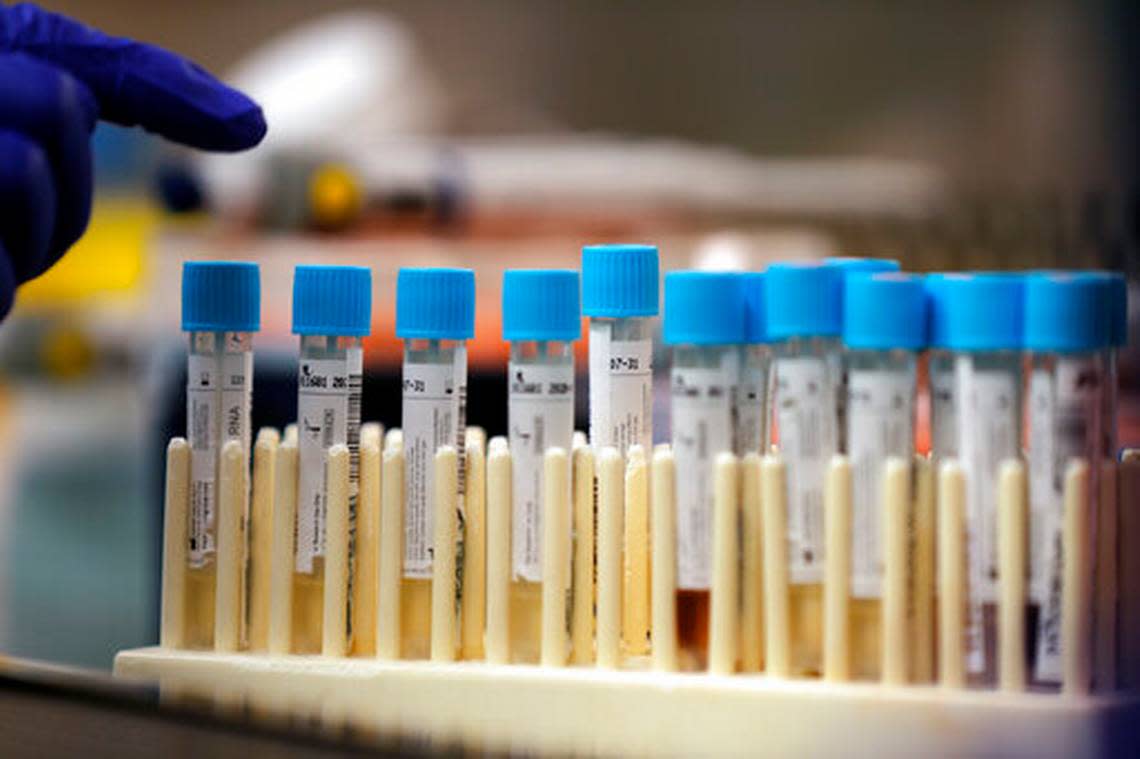Mask up, Washington: Health officials say it’s time to play it safe as COVID cases rise

- Oops!Something went wrong.Please try again later.
- Oops!Something went wrong.Please try again later.
With COVID-19’s rise in cases and hospitalizations, Washington state health officials want you to remember your masks.
Secretary of Health Dr. Umair Shah said at a Wednesday briefing that indoor masking is a key tool now, particularly in crowded, not well-ventilated spaces.
The state, however, is not issuing any new universal mask mandates. Indoor masks are still required in hospital and health care settings, long-term care settings and correctional facilities.
“This is a time for you to be wearing a well-fitted appropriate mask to be able to protect yourself and those around you,” Shah said.
N95 masks are now the preferred option as supplies have grown.
The reminders came on the same day Washington Gov. Jay Inslee announced he had tested positive for COVID-19.
In an announcement on social media, Inslee said: “Today I tested positive for COVID-19. I have only very mild symptoms, and I’m thankful to be vaccinated and boosted. I hope all eligible Washingtonians consider getting their booster, which is our best tool for preventing serious illness.”
Not long afterward, Lt. Gov. Denny Heck also reported he was working from home after receiving a positive COVID test. Heck’s news release said the two cases are unrelated.
Washington state’s COVID-19 dashboard shows 245 cases per 100,000, up from a low of around 40 in mid-March. Health officials warn that totals are likely an undercount with more home testing happening.
Those with positive home test results are advised to notify their healthcare providers and notify either via the WA Notify app or call the state’s COVID Hotline (800) 525-0127
As parts of the state move from the CDC’s “low” community level to “medium,” including Pierce County, officials said it’s likely a matter of time before more areas also see the pace of cases increase.
Dr. Bob Lutz, COVID-19 medical adviser for the Department of Health, noted it was important to plan ahead and have home tests ready to use, not only to test ahead of events to protect others but also if/when you have symptoms.
Government-supplied free tests are available at www.covid.gov/tests.
“It may take one to two weeks for these tests to actually arrive although in many times they’re arriving within 48 hours,” he said.
Lacy Fehrenbach, deputy secretary for prevention & health for DOH, said to take indoor ventilation into consideration when out at places and when at home.
“Pay attention to the ventilation where you are and the air exchanges,” she said. “So places like schools, restaurants, offices, any sort of building that you go into, if you’re indoors, open windows if possible. And if you’re gathering, go outside whenever possible. That will lower your risk.”
While all the tips have been around since the start of the pandemic, Shah said it’s important to remember all the tools now to get ahead of the growing caseload, particularly the Northeast and Midwest.
“We really have an opportunity to get ahead of this and prevent from what we’re seeing across the country,” he said.

